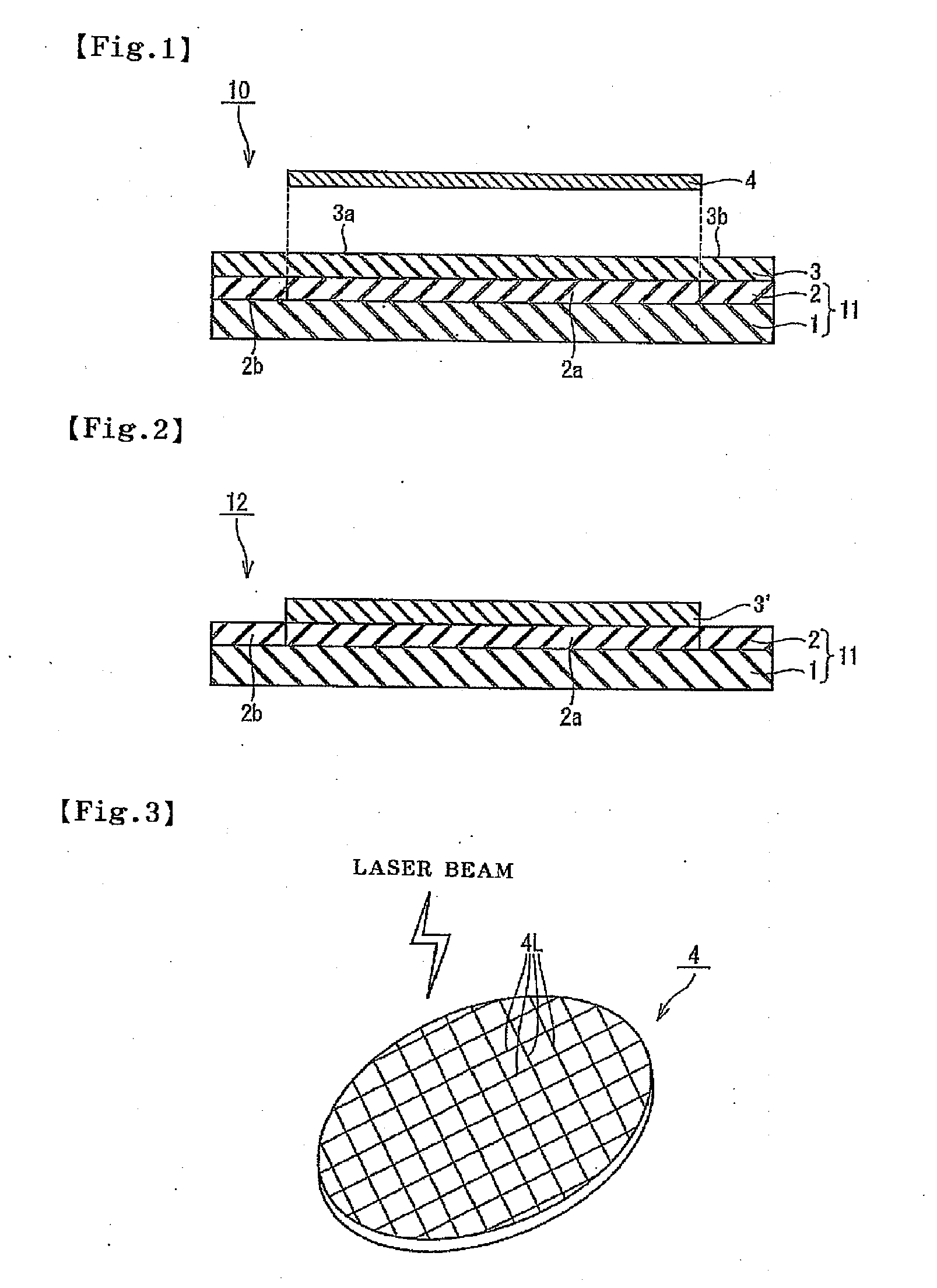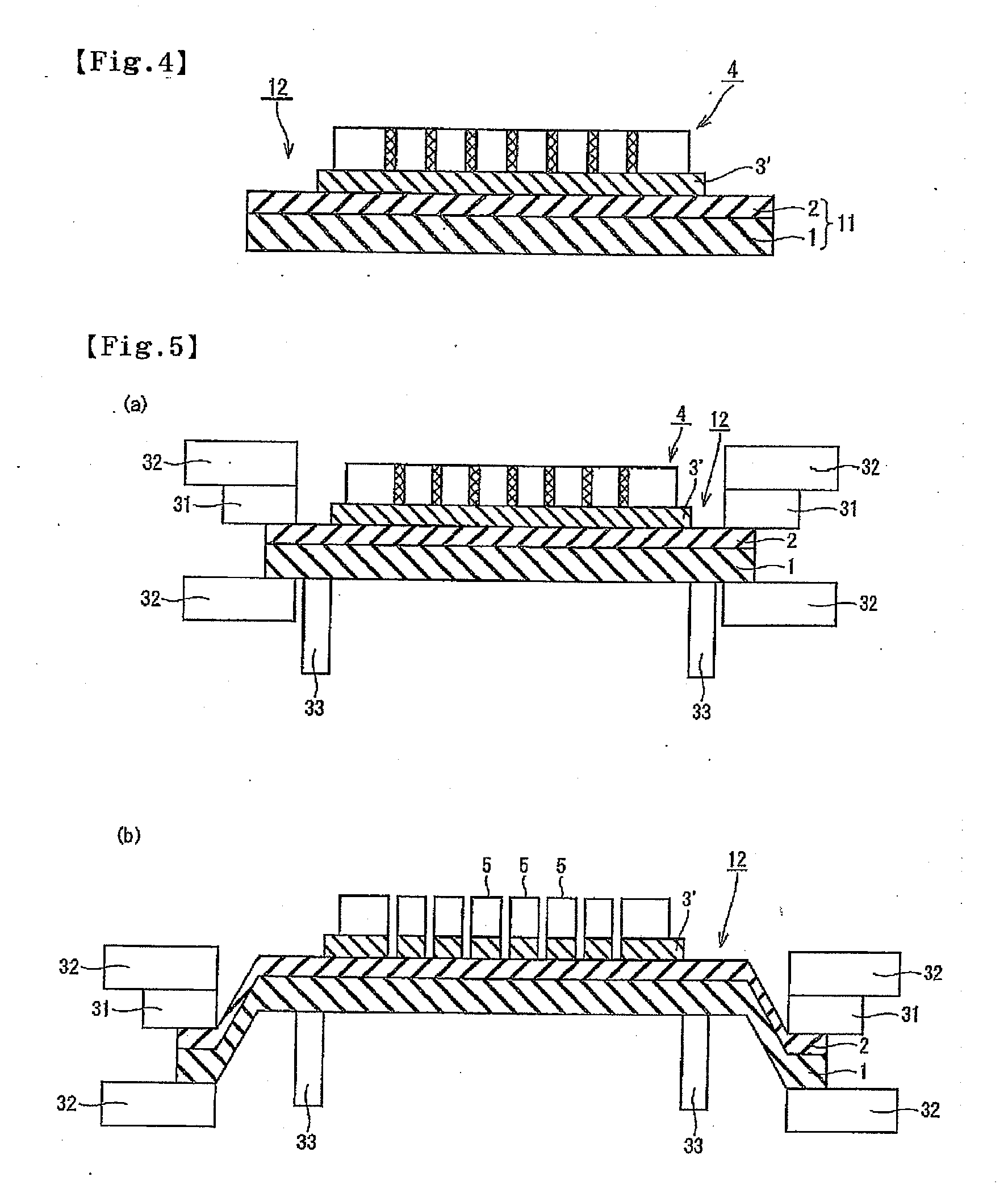Thermosetting die bonding film, dicing die bonding film and semiconductor device
a technology of dicing die and bonding film, which is applied in the direction of film/foil adhesive, basic electric elements, solid-state devices, etc., can solve the problems of poor bonding strength between the electrode member and the semiconductor chip, poor bonding strength, and poor characteristic, so as to prevent tensile storage modulus, prevent wettability and tackiness of the adherend, and prevent cracking
- Summary
- Abstract
- Description
- Claims
- Application Information
AI Technical Summary
Benefits of technology
Problems solved by technology
Method used
Image
Examples
example 1
[0128]A solution of an adhesive composition having a concentration of 23.6% by weight was obtained by dissolving the following (a) to (d) in methyl ethyl ketone.
[0129](a) Epoxy resin (manufactured by Japan Epoxy Resin Co., Ltd., Epicoat 1004, melting point 97° C.) 113 parts by weight
[0130](b) Phenol resin (manufactured by Mitsui Chemicals, Inc., Milex XLC-4L, melting point 59° C.) 121 parts by weight
[0131](c) Acrylic ester polymer having ethyl acrylate-methyl methacrylate as a main component (manufactured by Nagase ChemteX Corporation, WS-023) 100 parts by weight
[0132](d) Spherical silica (manufactured by Admatechs Co., Ltd., SO-25R) 37 parts by weight
[0133]This adhesive composition solution was applied on a release-treated film (peel liner) composed of a 50 μm thick polyethylene terephthalate film subjected to a silicone release treatment and then dried at 130° C. for 2 minutes to produce a 25 μm thick die-bonding film A.
example 2
[0134]In Example 2, a die-bonding film B according to the present example was produced in the same manner as in Example 1 except that the amount of addition of the spherical silica of (d) was changed to 222 parts by weight.
example 3
[0135]In Example 3, a die-bonding film C according to the present example was produced in the same manner as in Example 1 except that the amount of addition of the spherical silica of (d) was changed to 779 parts by weight.
PUM
| Property | Measurement | Unit |
|---|---|---|
| Temperature | aaaaa | aaaaa |
| Storage modulus | aaaaa | aaaaa |
| Particle size | aaaaa | aaaaa |
Abstract
Description
Claims
Application Information
 Login to View More
Login to View More - R&D
- Intellectual Property
- Life Sciences
- Materials
- Tech Scout
- Unparalleled Data Quality
- Higher Quality Content
- 60% Fewer Hallucinations
Browse by: Latest US Patents, China's latest patents, Technical Efficacy Thesaurus, Application Domain, Technology Topic, Popular Technical Reports.
© 2025 PatSnap. All rights reserved.Legal|Privacy policy|Modern Slavery Act Transparency Statement|Sitemap|About US| Contact US: help@patsnap.com



